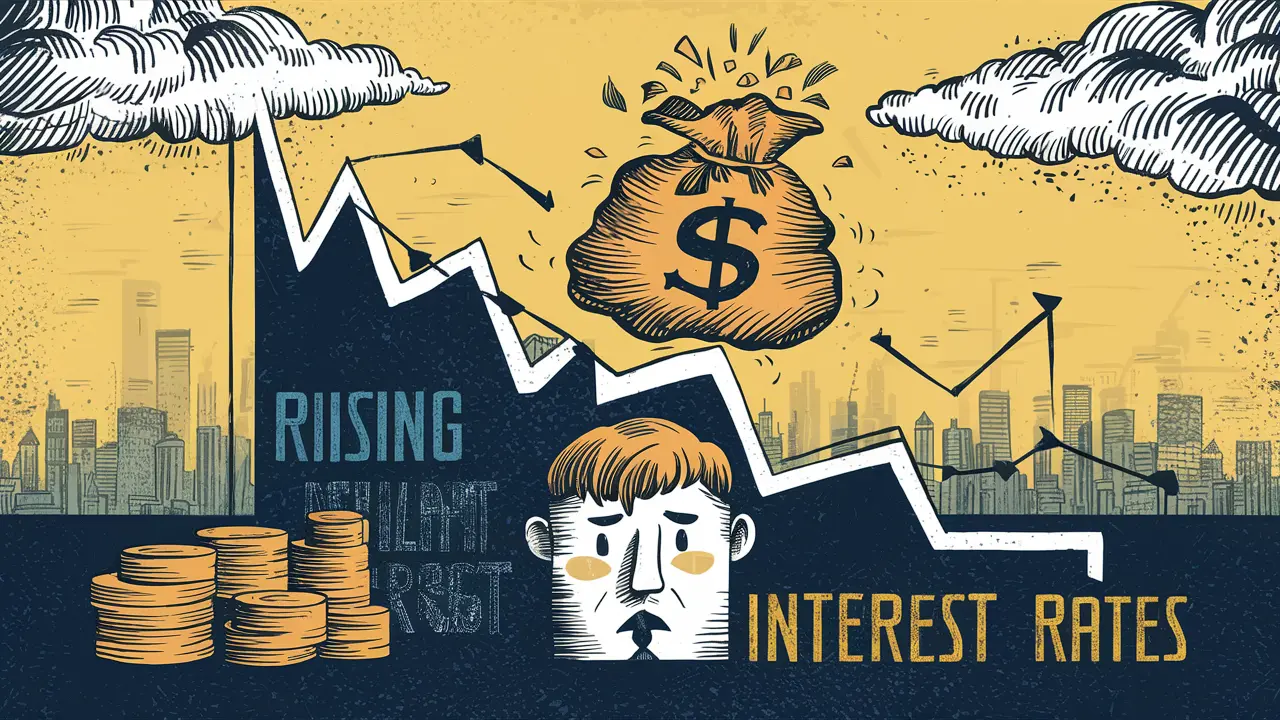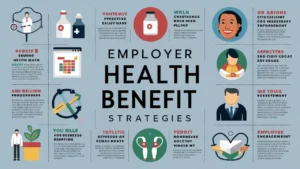Increasing interest rates tend to affect various markets significantly. The major goal of central banks is usually to raise rates so as to maintain an inflation rate that is low. This therefore leads to an increase in monetary policy tightening which usually travels across such markets as:
- Stocks and bonds
- Real estate
- Commodities
They have wide effects. Higher borrowing costs reduce consumer spending power and corporate earnings. Bond yields increase, causing bond prices to fall. Mortgage rates also go up leading to reduced housing affordability. In some cases, higher rates benefit certain sectors but put others under pressure.
It is important to know how things happen in order to make it through such an environment. Let’s consider what all this means for key markets with regard to increasing interest rates in detail.
Understanding Interest Rates
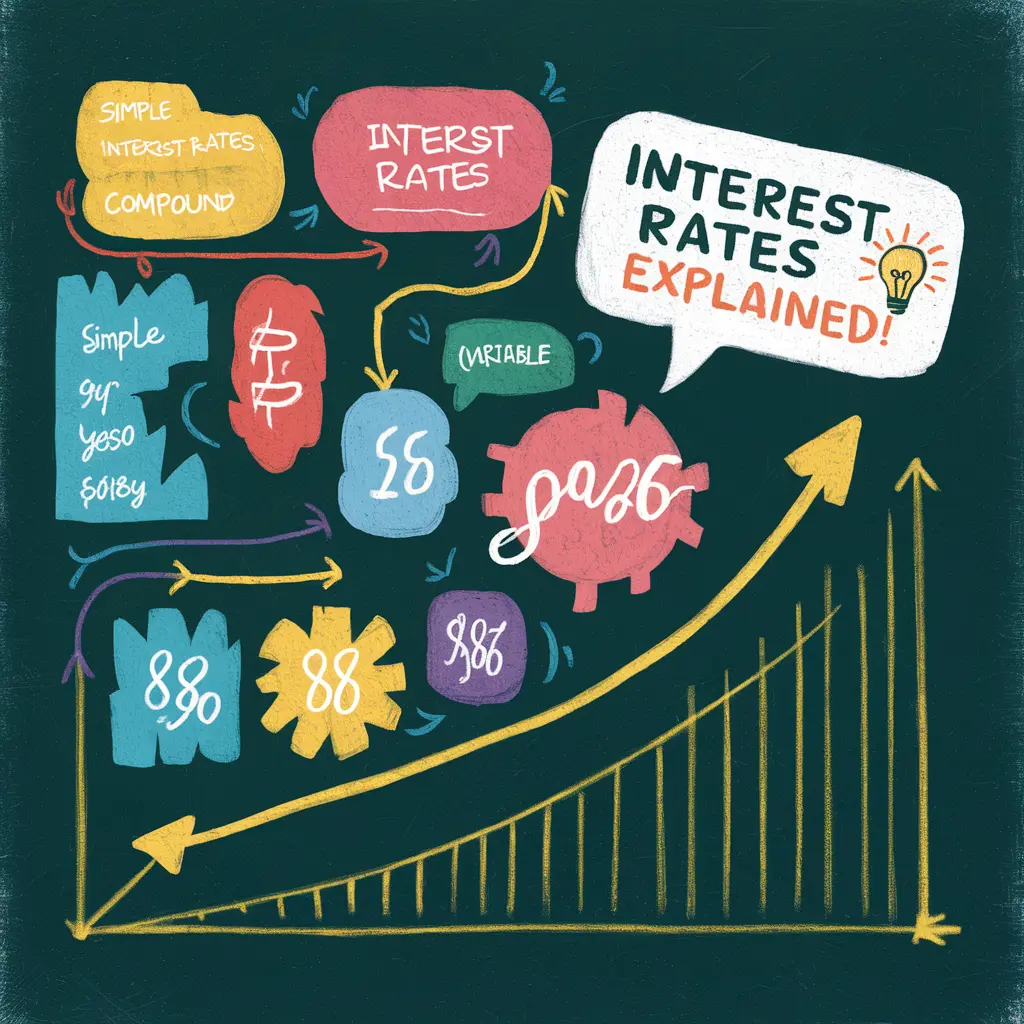
The borrowing of money has a certain cost labeled interest rates, which maybe likened to the price of hiring the money. Central banks, for instance, Federal Reserve, have powers to change the interest rates. What are the reasons for this? The most plausible explanation is that it is a measure to slow down expenditure hence alleviate on inflationary pressures. How can they control rates?
If the overnight rate at which banks lend each other money increases, the cost of loans will go up. The Federal Reserve is hiking its target range for the federal funds rate.
Higher interest rates quickly spread through the economy:
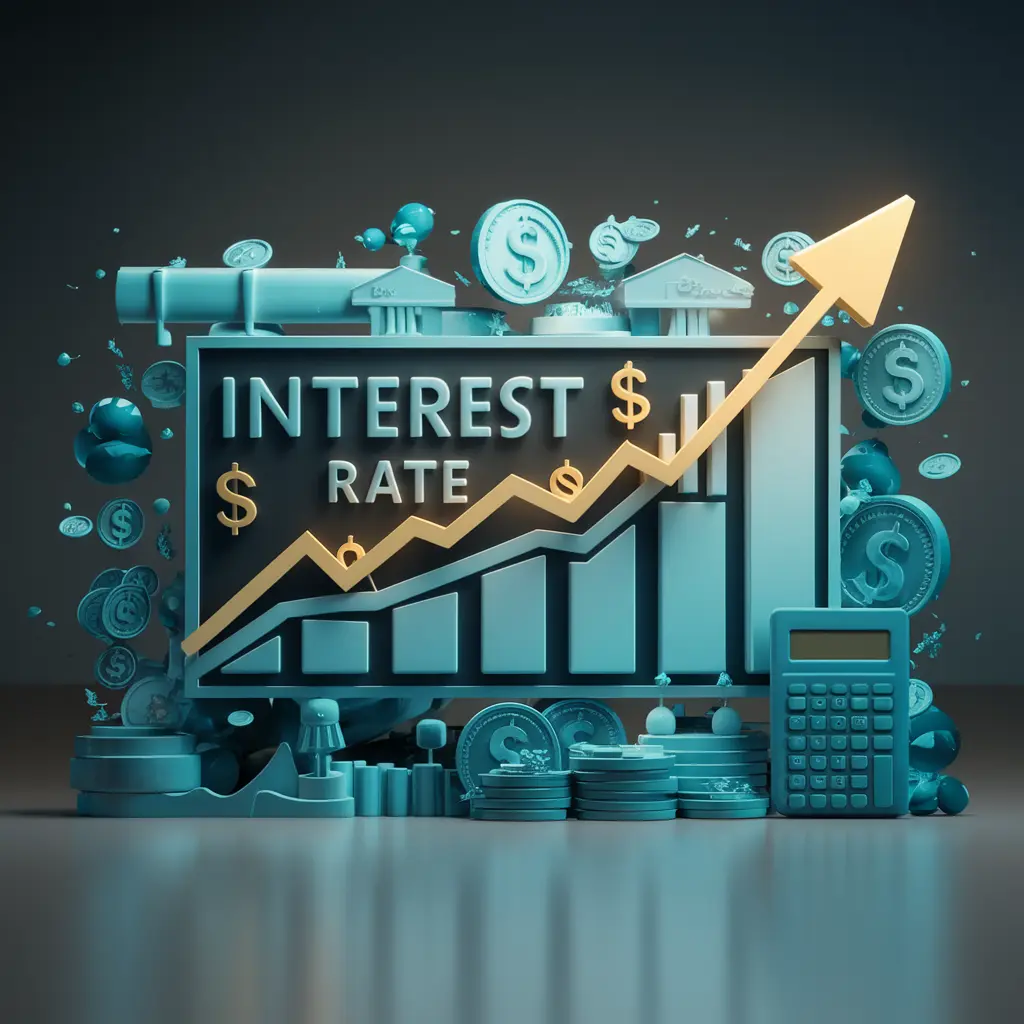
- Lending banks have raised their prime rates for both individuals and businesses.
- This will make mortgages more expensive hence costlier home ownership.
- Corporate financing costs have climbed up too hence increasing operational costs of firms.
- On the other hand, interests earned from saving accounts and government securities tend to be better.
Several key factors influence how much the Fed raises interest rates:
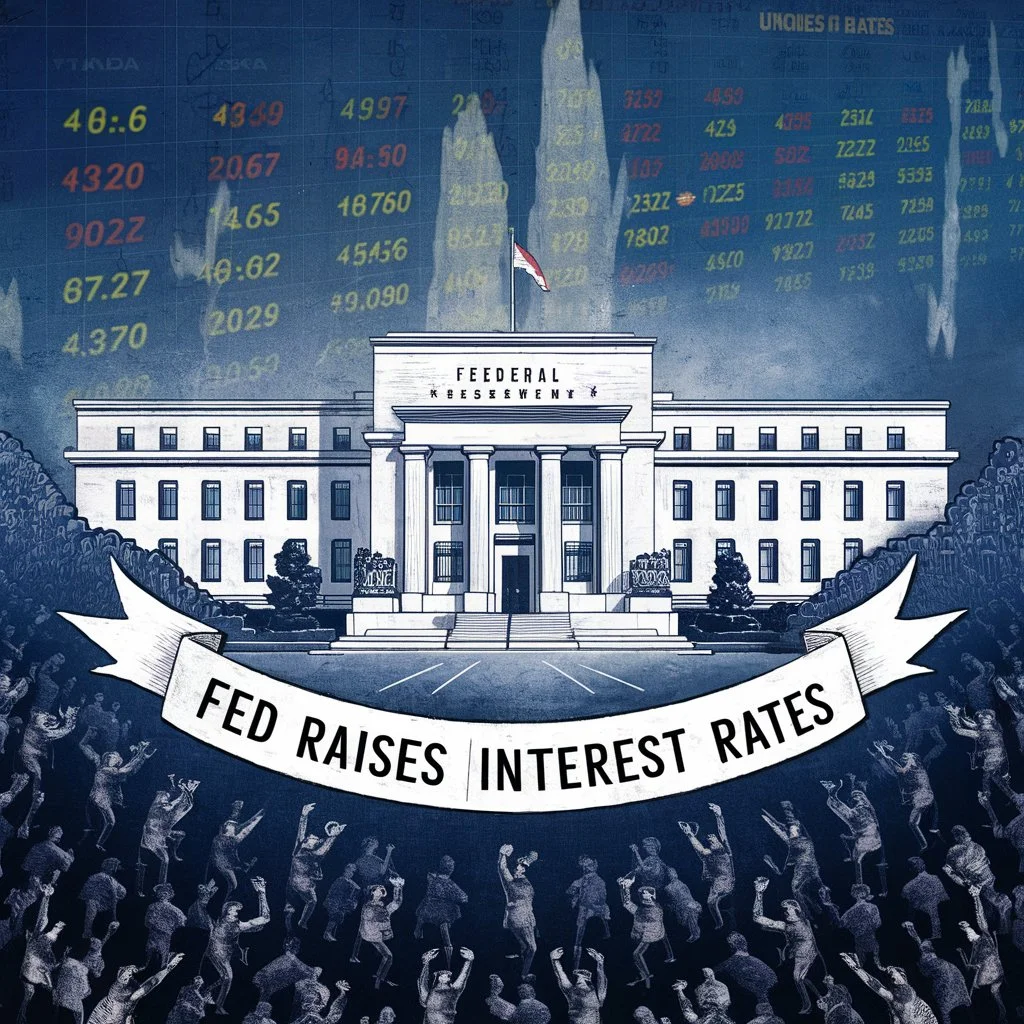
- Inflation level – Higher inflation prompts more aggressive rate hikes to cool demand.
- Employment situation – With low unemployment, the Fed can raise rates more.
- Economic growth – Robust growth supports higher interest rate policy.
The Fed doesn’t directly set consumer loan rates. But its policy rate changes quickly get passed through to most other interest rates. These impact the costs of borrowing for home loans, car loans, credit cards as well as company obligations.
Now let’s delve into the effect of increasing interest rates on key categories of assets such as stocks, bonds, real property and goods. First, we start with shares.
Impact on Equity Markets

When interest rates increase s t o c k m a r k e t may get severely affected because increased rates would raise the cost of debt for firms, thereby reducing their profit margins due to higher interest payments on loans made by borrowers which may in turn slow down overall economic growth because people won’t spend as much money since they have less disposable income.
As such high tides always bring low waves over equities prices while causing some industries like:
Interest Rate Sensitive Sectors
- Banks & financials – Can benefit from higher lending profits initially
- Real estate – Higher mortgage rates hurt housing demand
- Utilities – Must finance large projects at higher borrowing costs
High Debt Sectors
- Consumer discretionary – Less disposable income for shoppers
- Industrials – Higher financing costs for manufacturing plants
- Communications – Large debt loads make borrowing more expensive
Growth vs Value

- Growth stocks suffer as future profits get discounted more
- Value stocks tend to be less impacted by higher rates
As interest rates rise, stock investors rotate toward value stocks. These are companies with strong current cash flows like energy, basic materials, and dividend-paying blue chips. Fast-growing tech stocks may feel more pain as their distant earnings look less valuable.
Stock valuations also compress overall due to higher discount rates used for future cash flows. Price-to-earnings multiples contract in a higher interest rate environment.
However, moderately higher rates signal a strong economy early on. This can initially boost stock prices on hopes for better profits. But overly aggressive Fed tightening raises recession fears.
Overall, rising interest rates present both challenges and opportunities in the equity markets depending on sectors and investment styles. Managing this exposure requires monitoring Fed policy closely.
Impact on Fixed Income Markets

Fixed income investments like bonds are hugely impacted by rising interest rates. Bond prices and yields have an inverse relationship. As rates rise, existing bond prices fall.
Think of a bond you own paying 3% interest. If new bonds get issued at 4%, your 3% bond is worth less. Its price must discount to give the same 4% yield as new bonds.
This dynamic means the prices of outstanding bonds drop when interest rates increase across the board. Longer-dated bonds see larger price declines versus short-term bonds.
Government Bonds Treasury bonds see their yields rise most directly with Fed rate hikes. As the central bank lifts short-term rates, longer-term Treasury yields also climb. This drives down Treasury bond prices.
Corporate Bonds Interest rate risk extends to corporate bonds too. Higher yields make new corporate bond issues look more attractive versus existing ones. Prices of older bonds must be discounted accordingly.
An added risk – higher interest expenses from rate hikes can strain some corporate issuers’ ability to service debt. This increases risk premiums and credit spreads on lower-rated bonds.
The prices of mortgage-backed securities (MBS) are significantly lowered by rising mortgage rates. As mortgage costs increase, property buying slows reducing MBS prepayments. This extends the duration and interest rate risk of the MBS pool.
Overall, bond investors see large markdowns in their portfolio values as interest rates rise rapidly. Strategies like shortening duration and upgrading credit quality can help defend against these impacts.
Bond funds also see increased redemptions as investors sell off fixed income holdings. Active portfolio management focused on mitigating duration risk becomes critical in this environment.
Impact on Real Estate and Commodities
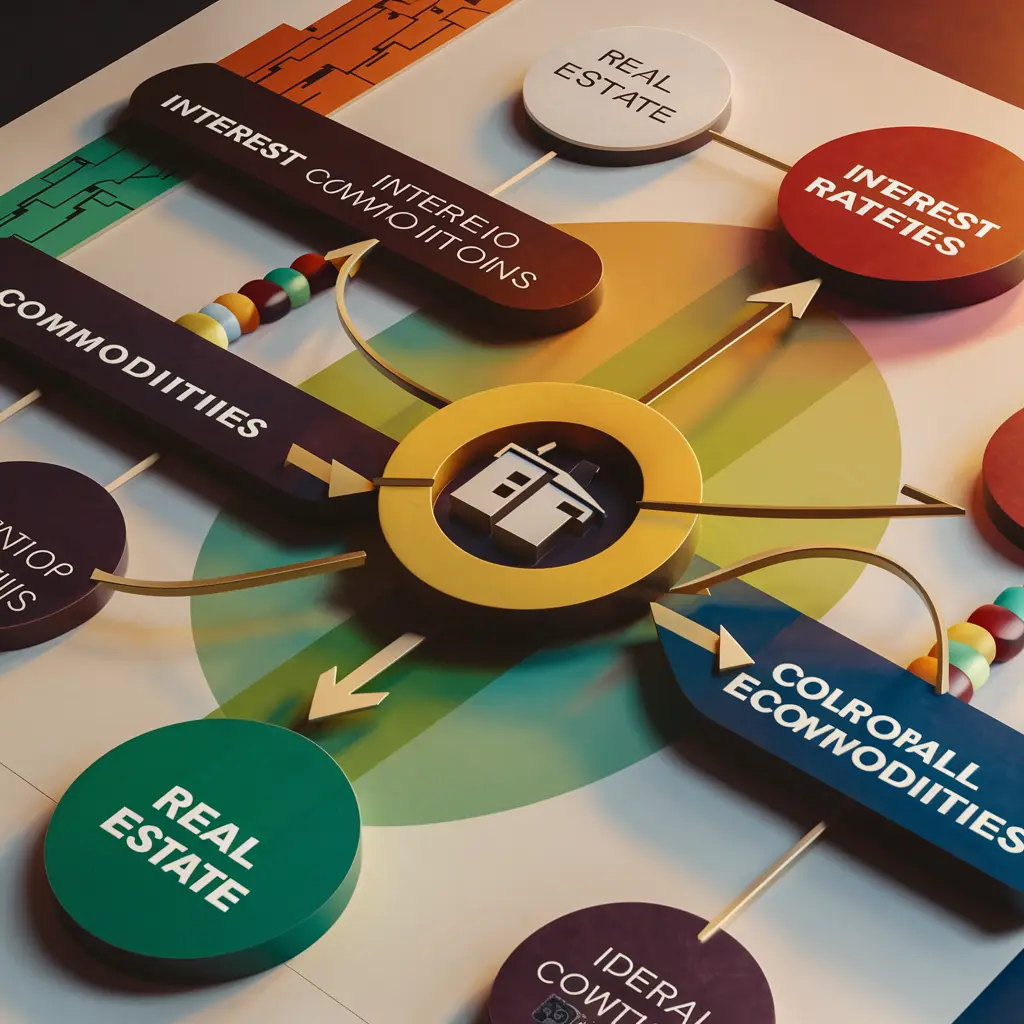
Real estate and commodity markets face significant impacts from increasing interest rates. First, let’s tackle real estate.
Residential Real Estate An elevated mortgage rate means that buying a house becomes much more expensive. When mortgage rates go up from 3% to 6%, monthly payments for a $300,000 house shoot up by more than $500!
This hurts housing demand and prices. Buyers get priced out, so home sales volumes decline. Sellers then must lower asking prices to attract the reduced pool of qualified buyers.
However, limited housing inventory can partially offset falling demand. And those with fixed-rate mortgages avoid increased costs until refinancing.
Commercial Real Estate Rising interest rates also impact commercial properties like office, retail, and apartment buildings. The capitalization rates used to value these assets increase as rates go up.
For example, a 5% cap rate means a $1 million annual rental income indicates a $20 million property value. Raise the cap rate to 7% and that same $1 million income implies just $14.3 million in property value.
Higher borrowing costs from rate hikes make it more expensive to finance commercial deals. This puts downward pressure on pricing and transaction volumes.
Commodities Interest rates have an inverse relationship with commodity prices in many cases. As rates rise, commodity futures pricing and spot prices often decline for several reasons:
- Higher interest rates make holding physical commodity inventories more expensive to finance and store.
- Rate hikes tend to strengthen the U.S. dollar, making dollar-denominated commodities more costly for other currencies.
- Slowing economic growth from tighter monetary policy reduces demand for industrial commodities.
However, gold and other precious metals sometimes rise as safe haven investments during periods of market turmoil and high inflation driven by rate hikes.
Overall, rapidly rising rates put downward pressure on most real estate and commodity prices by increasing costs and dampening economic growth. But some exceptions exist.
For More Information Read This Article:
Investment Strategies and Portfolio Implications

Adapting investment strategies across asset classes is necessary in light of increasing interest rates.
Let’s look at some key portfolio adjustments to consider:
Asset Allocation As interest rates climb, investors often rebalance to reduce risk asset exposure. This means trimming equities and reallocating more to fixed income. Within fixed income, shifting to shorter duration bonds helps protect against price declines.
For those still adding to equities, dividend stocks and value sectors tend to outperform in this environment. Sectors like utilities, energy, and financials usually hold up better than interest rate-sensitive technology and consumer discretionary stocks.
Fixed Income Strategies Bond investors must actively manage duration risk as rates rise. Strategies include:
- Laddering – Owning a portfolio of bonds maturing across different years
- Shortening duration – Shifting to shorter-term bonds until rates stabilize
- Improving credit quality – Upgrading to higher-rated corporate bonds
- Going active – Using bond funds that adjust duration tactically
For retirees relying on fixed income, rising yields allow more income generation from new bond purchases over time. Annuity products can also be evaluated.
Equity Strategies Equity portfolios may look to reduce exposure to highly valued growth stocks vulnerable to rising discount rates. A rotation into lower P/E value names and dividend payers makes sense.
Sector rotation is also important, emphasizing areas benefiting from higher rates like financials and energy over interest rate-sensitive categories like consumer discretionary and technology.
Alternative Investments Commodities and real assets like real estate, infrastructure, and certain alternatives can provide portfolio diversification and inflation protection amid rising rates. However, valuation impacts require selective exposure.
Real estate investors may need to accept lower cap rates on properties. Emphasizing shorter-term leases and Class A properties can make sense.
Overall, cutting risk and increasing fixed income diversification is prudent as the Fed continues hiking rates aggressively. Defensive positioning is wise until rate policy normalizes.
Risk Management and Hedging

As interest rates rise, managing interest rate risk becomes crucial for investors. Significant rate increases can devastate portfolio values across asset classes like bonds, real estate, and even equities. Some hedging strategies can help mitigate this risk.
Interest Rate Risk Interest rate risk refers to the vulnerability of investments to rising rates. It impacts fixed income holdings most directly, but also hits other rate-sensitive areas:
- Bonds lose value as yields increase
- Mortgage-backed securities extend in duration
- Real estate prices fall on higher mortgage rates
- Equity valuations compress on higher discount rates
Even conservative investors face interest rate risk from rising yields eroding fixed income and savings values. More aggressive growth investors get hit by the impact on risk asset valuations.
Hedging Strategies Various techniques allow investors to hedge or reduce interest rate risk exposure in their portfolios:
Interest Rate Swaps – Exchanging floating-rate interest for fixed payments helps lock in borrowing costs.
Interest Rate Futures – Taking short positions in interest rate futures contracts offsets losses elsewhere.
Interest Rate Options – Buying interest rate caps or floors protects against extreme rate moves.
Inverse Bond Funds – These funds rise in value when interest rates increase, offsetting bond portfolio losses.
Derivatives like swaps, futures and options all allow investors to gain exposure shorting rising interest rates. This helps neutralize losses in bonds and rate-sensitive sectors.
Portfolio stress testing and scenario analysis is also crucial. This allows quantifying how much further interest rates could rise and the resulting P&L impact. Risk limits and stop-losses become important.
Overall, while rising rates create challenges, many tools exist to mitigate the associated risks prudently within investor policy guidelines and return objectives. Don’t get caught flat-footed!
Macroeconomic Factors and Outlook
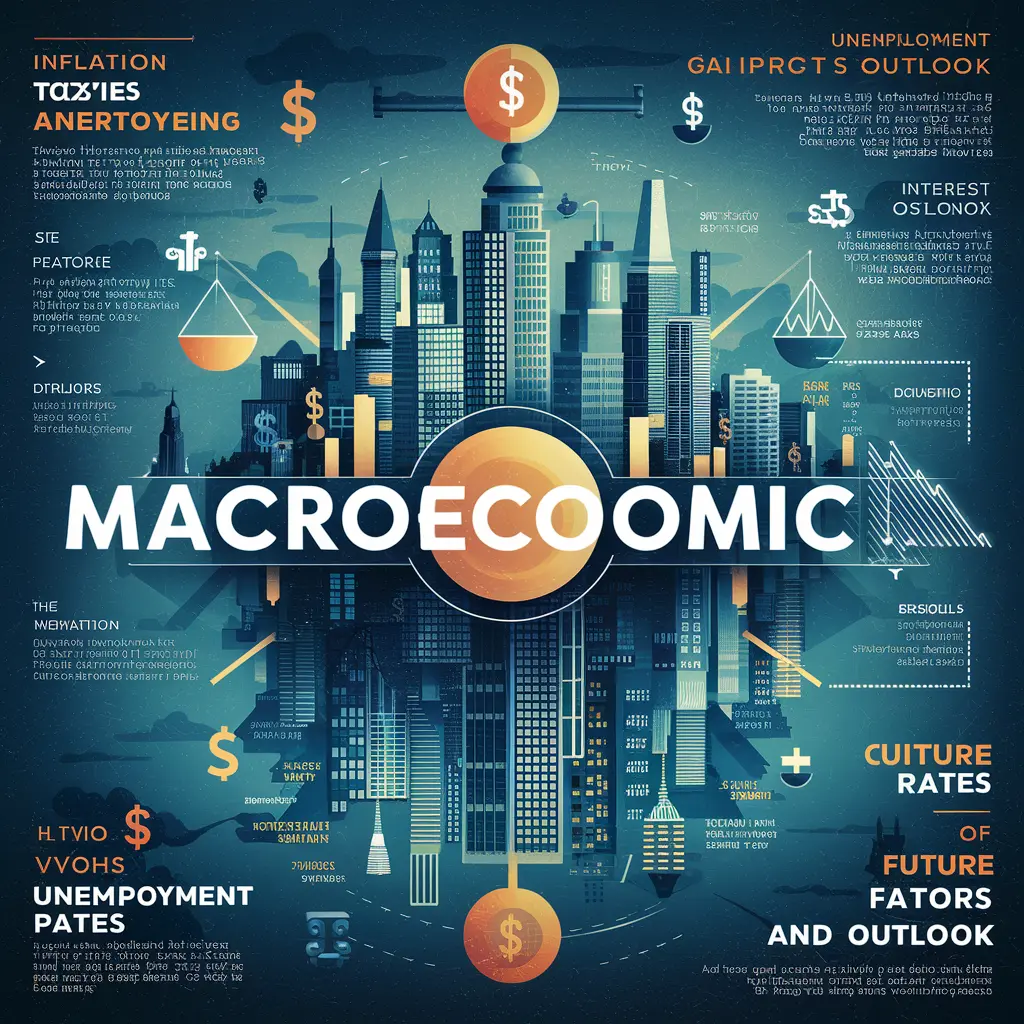
Rising interest rates don’t occur in a vacuum – they are influenced by and impact the overall macroeconomic environment. Let’s examine some key factors:
Economic Growth Central banks raise interest rates to cool overheated economic growth and inflation pressures. However, overly aggressive rate hikes can go too far and stifle growth excessively.
Slowing growth reduces future corporate earnings potential, putting downward pressure on equity valuations. It also increases default risks for lower-rated corporate bond issuers.
At the same time, an economic soft landing with moderating but positive growth could be a goldilocks scenario. It keeps inflation under control without sparking a severe recession.
Inflation Expectations The trajectory of inflation expectations is critical for gauging how much further interest rates may need to rise. If inflation remains stubbornly high, the Fed and other central banks will continue tightening policy aggressively.
Conversely, renewed disinflation would allow interest rates to stabilize at lower levels. Wage growth, energy prices, and import/export pricing all factor into future inflation projections.
Bond market inflation expectations derived from Treasury yields are also important signals for central bank policy adjustments.
Geopolitical Risks Geopolitical turmoil and supply chain disruptions can exacerbate inflationary pressures, prompting more forceful interest rate responses by central banks globally. Conflict zones, sanctions, and trade policies all create uncertainties.
Safe-haven flows during such environments also influence currency values, commodity pricing, and sovereign bond yields. Overall market volatility tends to increase during geopolitical flare-ups as well.
Looking ahead, investors must weigh economic crosscurrents carefully. Balancing recession risks against inflation backdrops will be crucial for positioning portfolios appropriately as interest rates evolve.
Monitoring labor data, consumer metrics, commodities, and manufacturing alongside central bank policy statements remains paramount. Taking a dynamic approach allows capitalizing on opportunities amidst changing market conditions.
Final Words
In summary, rising interest rates send shockwaves through financial markets. As we examined, the impacts reverberate across stocks, bonds, real estate, commodities and portfolio strategies.
Equity investors must be selective amid rising rates. Interest rate-sensitive sectors like real estate and utilities face headwinds. But financial, energy and value stock exposures can benefit. Growth stocks and richly-valued tech names suffer as future profits get discounted harder.
In fixed income, bond math dictates that prices must fall as yields rise. Actively managing duration, credit quality and diversification becomes critical for bond investors. Shorter-maturity and higher-quality debt provide better insulation.
For real estate, higher mortgage rates and borrowing costs pressure property prices and valuations lower. Both residential and commercial real estate demand can get stifled. Commodity prices also often decline during Fed tightening cycles.
From an investment strategy perspective, reducing overall risk exposure through asset allocation is prudent. Emphasizing fixed income over equities helps preserve capital. Within asset classes, focus shifts to rate-hedging and defensive sectors.
Various hedging techniques like interest rate futures, options and swaps allow neutralizing rate risk directly. But diversification through asset selection remains essential too. Favoring value over growth and dividend income becomes paramount.
Looking ahead, the magnitude and pace of interest rate increases will drive the degree of market impacts. Central bank policy responses to economic data will signal whether a soft or hard landing lies ahead. Monitoring inflation expectations is key.
Ultimately, the ability to dynamically position portfolios while managing interest rate risk prudently will determine investment performance. Those adapting to the changing tides stand to ride out the turbulence and emerge well-positioned

James Wilson is the insightful financial writer behind the wealth of knowledge on WealthWaves. With a keen understanding of finance and a passion for helping others navigate the complexities of money management, they specialize in crafting informative articles, practical tips, and expert advice to empower readers on their journey to financial freedom.
Join James Wilson on WealthWaves to embark on a path towards financial success and prosperity.
